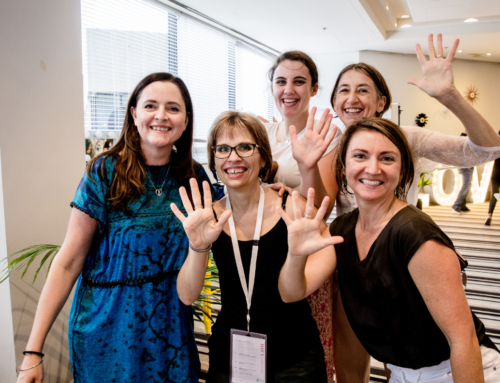I love to talk about things that impact our profession as Naturopaths, Nutritionists and Practitioners, and one of the biggest topics is PRICING! So, today let’s get into how to raise prices and charge your worth.
Introduction to Pricing
Pricing was one of the biggest things that I had a hurdle with when running my clinic. So I’d love to share this conversation with our entire profession about:
- how to price your products and services when first starting out
- and then what to do when you need to put the prices up
I’m starting this conversation with my naturopath-extraordinaire gal pal Jules Galloway. We hope you get a lot out of it and we’d love to hear about your pricing a-ha moments in the comments below. Enjoy x
Initial Pricing
How much did you first charge when you first came out of college?
I graduated in 2006 so it must have been about $60. I thought, “$60 sounds good – nice round number, one dollar a minute.”
But even that felt like a stretch at the time because I’d come from a retail environment. I was used to being offered somewhere between $20 and $25 an hour. It seemed like a really good jump up.
When you’re an employee, there isn’t anything that you’re spending on to be at work, whereas when you’re running your own business, you start to realize you’ve got to pay rent from that hour, and you’ve got to pay suppliers from that hour, and you’ve got to pay utilities from that hour.
When did you first notice that maybe the money wasn’t quite what you thought?
Pretty early on, although I had a little room out the back of my house when I started out, so that didn’t cost me anything. But I also wanted to diversify and get a room in a place that was on the other side of town. That’s when I started to realise a third of what I made was going to go towards rent. The owner was really lovely and was only going to charge me per client rather than per day or per half-day, which is what a lot of people have to pay.
So there wasn’t too much pressure to be able to pay rent. It was only going to be a third of what I made – but it was a third of what I made!
There was a no Facebook then, no Facebook Ads, no social media marketing, no SEO for your website. We were literally printing out flyers which cost money and then handing out the flyers. I was dropping the flyers, talking to people, and doing letterbox drops, which takes time.
You suddenly realise you’re not getting paid for your time and it’s costing you to produce these marketing materials. You get a batch of business cards done or some postcards to put in gift bags for an event, and that was the sort of grassroots marketing that I was doing at the time, and it added up really, really quickly. Really quickly.
It’s not only the initial outlay that you start to notice how much things are costing. When it comes to things like tax and all these other things, you don’t even realize that a third of your money is already gone.
Then you find out that when you do your tax in your business you usually have to do it through an accountant, and that accountant charges you money. Everyone wants their little slice. Everything starts costing more money. You want to register your business, to join that association, to pay your indemnity shop, insurance, and so on.
Owning a business is a lot different from working a job.
At that time I was terrible with money. Although I’m good with money now, I was green then because I didn’t know what I was doing. I went from an industry where I earned a lot of cash to an industry where I was supposed to do everything. It was just expected that I would know about things like profit and loss statements and tax. But, I didn’t put money away for tax because I figured I’d worry about that in June. It was a very steep learning curve and a real culture shock for me.
Exactly the same for me and I’ve talked about it before – having shoeboxes full of stuff. Shoeboxes and files of papers and receipts, not organised whatsoever, and having multiple years of stuff. Going to a bookkeeper because I didn’t know I had to go to an accountant, and I knew they were more expensive than a bookkeeper.
So I found a bookkeeper to try and sort this stuff out. I had no idea what I was even looking at. Then once I started to notice the numbers, and how much was actually going out and how little was coming in, there was this moment of “I either need more clients or I need to put my prices up.”
Benefits of working a job …
Full disclosure – I ended up leaving that element of my practice and going into corporate for a good few years while I was in Melbourne. I stopped practising for a few years and I just let that slip away. And it was great because I …
- worked for someone else
- was on a really good pay packet doing product development training, and development research for vitamin companies training staff.
- went into that field for a while and really enjoyed it
But it didn’t end up working out for me.
Turns out I’m not a great employee. I’m not good at working for someone else if I don’t fully respect and believe in that person’s ethics. If I’m not 100% behind a business, I can’t get excited and do my job well. So I moved to Byron.
That was seven years ago and it was only about six years ago that I thought “I’m going to go back into private practice.”
But I knew what not to do from my time in Melbourne. That’s when I decided to approach everything from a completely different angle.
Social media had come up since then. So I decided to start a blog.
I had a website, all of that stuff, but this was just like private practice 2.0. I knew what not to do and this time I was going to track my money. This time, I knew how to track my money, how to measure things.
What you measure grows faster. Where attention goes, energy flows.
Money Blocks
I was hopeless with money but I realised that if I was going to do this again, and do it right, I had to learn to do the things I was uncomfortable with.
My mindset was all wrong. I hated numbers in columns – I used to say to people, “I hate numbers in columns. I don’t do numbers in columns. Can someone do my numbers and columns for me?” It was almost like a phobia for me – I would literally spreadsheets to my husband and ask him to do them for me. But really, it was a money block. I would always palm off the spreadsheets. As soon as I saw a spreadsheet, I would get heart palpitations and then go, “Yeah, this is the thing for my husband.”
It’s not a maths problem, it’s a money block.
It turns out, I can add up numbers! In fact, I’m not even bad at it. But it was the thing in my mind that was stopping me from giving it the attention I needed to give it. Once I knew the inner workings of my business, I could hand it off.
Now, I have a bookkeeper and an accountant. But prior to handing everything over to them, I learned all the nuts and bolts and all the inner workings. Because you can’t hand it over to someone without knowing that. Otherwise, you’re placing a whole bunch of trust in someone else’s hands, and you just can’t do that.
We’ve gone through years and years of study to figure out the entire human body. We’ve used our brains to answer all of those tests and exams and questions about what the human body does. But we can’t figure out some numbers coming in and some numbers going out?
It’s an emotional reaction that hits you in your body. It’s a fear and for everyone it’ll be a different reason. Everyone’s backstory will be different as to why they have these money blocks.
It might be the way your mum treated money.
It might be the way that you lost a job once and had to hit rock bottom.
Or it might have been that you went from making lots of money to being in this industry and having everyone say that you’re going to be poor forever because this is a sucky profession where no one makes money (which, by the way, is definitely not true!).
Everyone’s money backstory and blocks are going to be different.
But at the end of the day, there’s only one way through them and that is through them, not around them.
When I started leaning into my money and actually paying attention to where the money was coming in, and not just paying attention to where it was going out, that was one of my biggest breakthroughs.
I made a big freakin’ list of where everything was going out but wouldn’t pay any attention to the abundance that was coming into my life.
Before I was just looking at the lack, and magnifying the lack, and all I could see was lack. But as soon as I started recording and checking in on my bank balance about where money was coming in, things started shifting for me.
Celebrate Your Wins
What was important for me was celebrating when the money was coming in even if it was just an ebook that I sold for $15. If you stop and celebrate that, that’s huge. It feels really good.
When I launched my first online program, it was super cheap. I forget what I charged now. But every time I sold one, every time I heard that little ding on PayPal, I would high-five my husband. Even if I sold four things in ten minutes, that would be four high-fives, not one big one. Because it was really important to celebrate and appreciate every single sale that came in.
I have this piece of art I created where I colour in a chunk for every single person that joins. It’s symbolic – I write their name in and I give them a special colour. Every time, you high-five, or colour in the little chunk, or put the name on the post-it note it, and reminds you that someone bought your thing. Someone trusts you with their money. Someone has entrusted you to do a job with them – not for them, with them.
Whether it’s a program or a consult, or whatever it is, someone has decided they like your vibe and they’re ready to work with you.
It’s Okay To Want More Money
It just so happens that money has energy. We can use that energy (money) to pay for really cool things like mortgages, bills, reaching more people, and treats for ourselves.
One of the programs that I did early on business-wise was called “fun tokens.” People would just give you X amount of fun tokens and then what are you gonna do with your fun tokens?
Well, you can own more of your house, or you can go on a holiday, or you can do whatever you want with all of the fun that you just received. Because somebody else is giving you fun. Fun has a nice energy to it. Well so does money.
But no one ever gets overly excited about money because people might think you’re greedy or that you’re raising your prices to rip people off, not because you need to check your energy, or because you want to spend more time doing a better job. If you get too excited about money, people think that you’re in this for the wrong reasons. And that is often not the case.
When you think of money as an exchange of fun energy it just feels nicer, right?!
Raising Prices
So when it does come to the pricing side of things, how did you make the leap from $60 an hour?
By the way, if you’re charging $60 an hour today – this is my opinion but it’s based on value across our profession and self-worth, and it comes from real actual data about what it costs to run a business – it needs to be a hundred dollars an hour, minimum! And even then, you are going to be struggling to pay the things that you need to pay. But it needs to be $100 an hour. If you feel a little bit challenged and uncomfortable by that, lean in.
I think we need to preface this by pointing out that you’re voice in your head is going to say, “That doesn’t apply to me because my situation is different.”
Instead, you need to turn it around and say, “How can this apply to me?”
Someone might think, “Yeah but you didn’t have a naturopath two doors up who’s charging less, but you don’t have a chemist warehouse on the corner who’s selling the same product for cheap, but you don’t have three kids, but you don’t have any kids, but you don’t give all of your time to volunteering… etc.”
But you know what? We all have that voice in our head that wants to be like that. It’s about how you go about not listening to that voice, and and acknowledging that the voice exists because you can’t shut it off. It’s part of being human. It is in our mind, so acknowledge that it exists, look past it, and lean in. It’s never gonna get shut off. Whether you have money blocks, or imposter syndrome – whatever you’ve got going on, you’re always gonna have it. Acknowledge it and lean in.
When I was getting burned out, I was doing all the things for all the people and putting in the extra mile after hours, doing all the research. Now we all know there are only X amount of hours in the week and I was using all of the days a week.
When I wasn’t seeing clients, I was
- designing and running programs
- posting on social media
- building and running a website
- creating and running courses
- putting my online courses up
- and trying to scrape money together to pay a virtual assistant so that I could offload some of those duties.
Then trying to manage said virtual assistant, I was finding it hard to be a leader and express what I wanted them to do and train them properly. The reason was that I was too busy doing all the other things in the business. I literally had no time. I wanted to train my virtual assistant to do this for me, but I had no time to train them. So I just kept doing everything myself.
More money is not always the answer
You might think you need more money. So you take on more clients. Then you get more tired and have even less time.
And it just so happened I was in a mastermind with some other businesswomen in non-related fields who were all telling me to put my prices up. My best friend was telling me to put my prices up. But my husband was afraid no one would buy things at the new price.
I remember the first time I raised my prices because a friend of mine put down the challenge, and I’m always up for a challenge. The first time I did the jump I think I went from $140 to $200. I remember as I got close to the $200s, I thought that was where I would stay forever.
I wasn’t specialising in something but I had a special interest in a couple of specific health issues, and I was sinking a lot of money into furthering my education on those particular topics. When the time came when I needed to put my prices up to cover all that, it was a huge jump. The next price rise went from around $200 to $300 for an initial consultation.
Now charge $300 for an initial consultation and $220 for a follow-up.
And of course, I started thinking, “Who am I to charge that?”
I’ll tell you exactly why the $300 was an issue in my brain. It’s because I had a mentor who was the best person I could find to help me at that time. She’s written the book on some of these topics, and she’s amazing. She charges $300 an hour. So if she charges $300, then I surely need to charge less than that because I’m not as good as her. I’m never gonna be as good as her because she is bloody amazing.
That’s what my brain was saying, and the other part of the brain was saying, “They’re not gonna come, they’re not gonna pay it.”
And at the same time, I know I can help these people. I can provide this amount of value or ten times it, to be honest. If someone comes to me, I’m confident that I’m the right person to help them. But even though I feel that it’s still so hard to translate that into charging $300.
The other interesting thing related to pricing is finding your ideal target market. Once you’ve actually found your ideal client, it becomes really simple to choose what you’re spending time or money on. You know you only have to focus on is this particular thing. “Will this help me to serve my clients better?” That’s it.
How To Raise Your Prices
I know you’re all thinking, “But how do you put your prices up? It’s fine for you to say ‘Oh put your prices up to $300,’ sure thing. I’m not gonna double my prices now, so how?”
There’s always a classy way to do things when it comes to business. You’ve got to let people know it’s going to happen. You’ve got to make sure they know how much you put into this.
I’m not saying you have to justify what you do. You don’t have to break it down and explain all the behind-the-scenes work or explain that seeing a client for an hour is actually about three hours work.
But you need to, in a very classy way, let people know the care and attention that you put into the work and why you’re the best person to help them. That’s not something you need to just do when you put your prices up, you should be doing that all along. It’s an ongoing conversation, including on social media.
Share about some of the background work that no one gets to see outside of your clinic hours, so then you’re building a story. You’re laying the groundwork so that they know you’re the best person to help them. When you see them, make sure that they know they’re getting the best care.
For example, I put in a lot of detail in the emails I send. I write little notes for myself to follow up with an email to ask how they’re doing, if they’re a complex case. Or if they’ve bought a program from me for a thousand dollars, as soon as they buy that program I put a note in my diary to follow up with them five days later. That’s the day I’m gonna ring them on the phone, just to see how they’re doing unexpectedly. Provide plenty of extra customer service.
Okay, so how do you pick a number for your new price?
For me, there’s two sides. I’ll go with the logical side about picking a number. For me to make the leap from going from $60 an hour to $120 an hour, I had to figure out how much it was costing me to stay open per hour.
I figured all of the things that cost, all of the outgoings. I split them up into every week and then I split them up into how many hours I was available. Even though I wasn’t seeing everybody all that time, but essentially for every hour that I was open, it was costing me $102.30. And I was only charging 60 bucks. Ouch! So realising it cost me $102.30 every hour my business was open, I decided I’d charge $105.
When it comes to marketing, you need to know how much it’s going to cost you to get a client. So how much does it cost you to advertise, nurture and convert a person from a stranger to a paying client?
After those two failed attempts, I then tried the third option. I wanted the price rise to feel slightly uncomfortable, without feeling greedy and stupid. So I started at $120, and then thought about where I would be five years from now. Then I thought about $400. But then I would be putting myself out of reach of some of the people that I want to serve, so I went back, and so on. Finally, I decided $200 felt doable.
When it comes to setting prices, you need to make yourself a little bit uncomfortable. You need to set your pricing for where you want to be in a year from now, because then you get a feel for what it’s like clearly to be in your goal.
I did have clients who wrote to me and said, “I’m really sorry, but this is outside of what I can afford right now.” So I helped them find someone else who would be a good replacement. Again, handle it in a classy way, but don’t go back into that victim mode of “I shouldn’t have done that.”
Each time I raised my prices I did get really scared. I got worried and thought I’d done the wrong thing and all the fear crept in.
Feel the fear, but don’t let it change what you do. You’ve chosen to be on a path. You’ve chosen to take that first step forward. You’re gonna keep taking the steps forward and use that spare time if your clients drop away a little bit. Use that spare time to go out and show people why you’re the best person for the job. Write a book, write some blog posts, do a Facebook live, do a webinar. Show yourself as a leader in the field.
That’s when they look at the price and they think $300 is stretch, but clearly. she knows a lot about whatever your specialist topic is, so I feel comfortable going to this practitioner. This is the person to help me.
You’ve used your time wisely to position yourself in your niche instead of back-peddling and losing money on your business.
Raising Your Prices Is Important
Raising your prices is really important for all sorts of reasons – having a sustainable business, having a life that you love, doing the things that you got into this business for in the first place. But one of the ones that I am most in admiration of is to be able to give back.
People who are most resistant in our profession to raising their prices is because they are in a low socio-economic area and only want to help those people. But if you can’t run your business, you’re just running a hobby to your own detriment, financially and physically.
The beauty of raising your prices enough to be sustainable is that you then have time and means to volunteer where and when you want to.
The lightbulb moment for me was when I was volunteering in Greece, and my roommate was a naturopath. We talked about pricing, and she talked about how many clients she saw, and how much she charged. I realised that was what allowed her to volunteer more often, and give back the way she wanted to.
Volunteering also has provided once-in-a-lifetime opportunities that I would not have had any other way, such as being the Nutrition Coordinator for a project in Fiji. I can give back and I can pay forward the charity I have received in my life.
To do this, my business model has to sustain eight weeks of travel a year when I’m not going to be at my desk, and I’m not going to be seeing clients, and I’m gonna have to pay my team to help run my business while I’m away.
Whenever I think about, “Who am I to charge $300 for this consult?” I remind myself that it’s a few more days I can give to Fiji. I’m a person that’s changing the world in a way that I couldn’t before. It’s a little bit Robin Hood-ish, but you know what? My clients don’t mind.
No one has ever questioned why I charge that much. Clients either say “Yes, it’s for me,” or “No, it’s not for me.” Never “Why.” The only people I’ve ever seen questioning what naturopaths charge are other naturopaths.
In Conclusion
I hope that anybody who’s listened to the video above or read this article will truly consider the impact you can make to not only your life, but the wider community, when you raise your prices. That you are empowered to step up and be in that receiving mode. And that this has reminded you that what you do is worth it, what you do is worth an actual financial reward, and that what you do with that reward is totally up to you.
For you it might be something different – it might your family, it might be animals, it might be travel, it might be all sorts of different things for you. But you can’t get that until you can step up and say “Yes, what I do is valuable!”.
You don’t have to use that extra time, money, and freedom that you’ve created to save the world. But you can use that time and energy and money to just be the best mum that you can be, or to be the best partner that you can be, or to be the best dog mum and adopt more dogs. Or – I’m just gonna throw this out there, I know this is radical – but you could just use it to nurture yourself.
Yes, imagine if we had a whole bunch of practitioners around the world actually looking after themselves and not burning out! Then you can help more people in the long run.
In considering all that we’ve covered, what is one actionable step that you can take from what you’ve heard today?
It doesn’t necessarily have to be about pricing, it could be around helping people, or changing jobs. But what did you get out of this conversation that you can take action on today that will shift you – and therefore our entire profession – forward?
Learn More
For more on this topic:
- Read the latest posts on making money as a practitioner
- Download my Free Money Management Planner









Leave A Comment